Olympian Profile: Paige Lawrence & Rudi Swiegers
Who could have guessed? Paige Lawrence and Rudi Swiegers grew up in two tiny Saskatchewan towns, 23 kilometres apart, where pair skating is perhaps 25th on the list of things to do behind rodeo.
Actually, Lawrence’s parents own a rodeo production company in Kennedy, Sask. (population 241), home to the Moose Mountain Pro Rodeo, a post office, a bank, a restaurant/bar and a grocery store/gas station. Her father is an ex-professional bull rider and travels all spring and summer to rodeos. On their ranch, they have bucking broncos and bucking bulls. Lawrence’s brother rides bulls. Paige would like to, but coach Patty Hole won’t let her. (“But not for lack of trying,” says Swiegers.)
“It’s on my list, though,” Lawrence said. “It will happen someday.” She has competed in barrel racing, not the usual prerequisite for figure skating. But obviously, she’s fearless, perfect for pair skating.
Their tremendous moxie has driven Lawrence and Swiegers to become perhaps one of the few, if not the first figure skaters from Saskatchewan to make it to an Olympics. They earned the berth when they took the bronze medal at the 2014 Canadian Tire National Skating Championships in Ottawa, seemingly an impossible dream for a couple of prairie kids.
They weren’t matched up in the usual way. Swiegers, born in South Africa, but raised in Kipling, Sask., (population 1,100) had just lost his pair partner and eyed up Lawrence, a tiny skater who, like him, was a leftie. In other words, they both rotate in the direction opposite to which most skaters do (although Swiegers is left handed and Lawrence is right handed, they both naturally rotate to the left). It’s rare to find two lefties, and there they were, in the same little club (they train in Virden, Manitoba).
Hole asked Lawrence to help out Swiegers and before she knew it, she was trying out pairs. Lawrence discovered she liked the feeling of being thrown in the air. They landed a throw triple Salchow during their second week together.
Lawrence started skating when she was four, the daughter of a figure skating mother and a hockey-playing father. There wasn’t much to do in Kennedy during the winter, but there was CanSkate. She landed her first triple Salchow when she was 16.
Swiegers’ mother was a doctor in Saskatoon, before she moved to Kipling, but he started skating late, at age 10. A succession of injuries as a singles skater turned him into a pair skater by age 15. He was 18 when he started to skate with Lawrence during the summer of 2005.
Hole brought on board an old friend, Lyndon Johnston – a world silver pair medalist in 1989 – for some technical expertise. Johnston arrived, expecting to see beginners, but saw a young pair team already doing amazing things. “Paige is probably the toughest girl I know,” Johnston said. “She is fearless when it comes to doing stuff, so now when they want to do more scary tricks, Patty sends them to me. I lose sleep over it.” Lawrence would love to do a throw quad.
They made a splash when they competed at a Skate Canada International in Kingston, Ont., in 2011 with a lift they called “The Missile” or “The Bullet” partly designed by David Pelletier. At one point, Lawrence’s feet are above her head, with her blades near his head and “hopefully he catches me,” she said. The first time they showed it to Hole, she covered her eyes. “That was the reaction we wanted,” Lawrence said.
The team has always shown so much promise, but has been foiled so many times by injury, however. Just before the 2012 Canadian championships, Lawrence suffered a concussion during a practice fall, but a month later, the team won a bronze medal.
They started the Olympic season with high hopes. They were thrilled with new programs choreographed by Lance Vipond (going back to their comfort zone of fun with “Rudy’s Rock” by Bill Haley and the Comets) and the long, designed by Bernard Ford, who gave them the soundtrack from “Oz the Great and Powerful.”
Their long program is not about Oz at all, but they skate to their own story: Lawrence is a mechanical doll, who after a change in melody and some side-by-side double Axels, becomes animated. At first she skates with robotic movement, and that changes when she comes to life.
With these arsenals in hand, Lawrence and Swiegers hoped for big things at the beginning of the year. “Paige and I believe that we are a very strong team and we are very confident with ourselves this year, especially with the new programs,” Swiegers said. “So we’re not going for that third spot. We’re going for national champions and everything is going to come from that.”
However, Lawrence developed an Achilles tendon problem in her left (landing leg) over the summer. By the time she got to training camp in September, her hamstring was pinching her – as her thigh muscles overcompensated for the initial troubles. All season long, the hamstring/groin injury hampered Lawrence. Even at the Canadian championships, she skated with her left thigh heavily taped, although there was less need for it as time went on. They could not do everything they planned. Still, they made the Olympic team.
They are known as a fun-loving team that brightens a room with their presence. At the 2011 Four Continents championships, Swiegers saved the day for U.S. team Amanda Evora and Mark Ladwig, after Ladwig broke the heel of a skate and had only three minutes to repair equipment. Swiegers, who had already skated, handed Ladwig his own boot and Ladwig was able to continue.
Later, U.S. Figure Skating flew Swiegers and his mother to Chicago to a Governing Council Meeting, where Ladwig presented the Canadian Samaritan with the U.S. Sportsmanship Award. Swiegers met the “higher ups,” as he put it. They both have come far from small-town Saskatchewan.
Want to read more about the figure skaters who will compete at the 2014 Olympic Games in Sochi? Pick up Beverley Smith’s new book SKATING TO SOCHI! The book profiles the top 40 athletes/teams with full-colour photos! Order online: Amazon.com, Lulu.com (ebook) or iTunes (ebook).
Beverley Smith


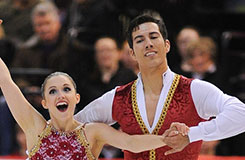
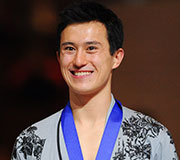
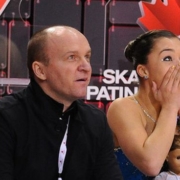
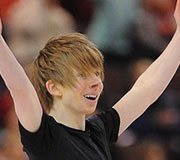
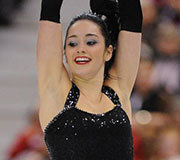

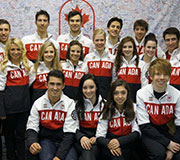
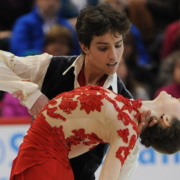
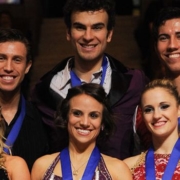


Leave a Reply
Want to join the discussion?Feel free to contribute!